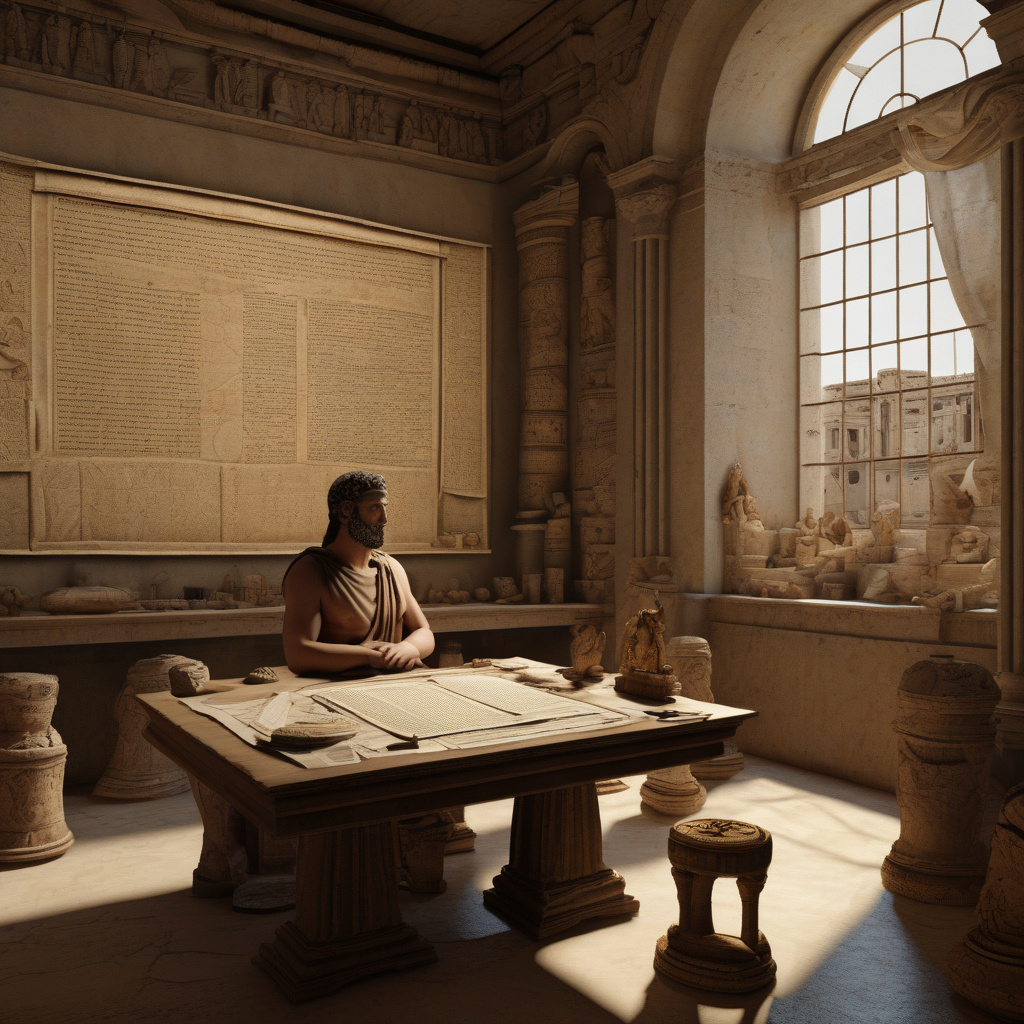Unlocking Daily Life in Ancient Rome: Aeneas AI Model Assists Historians in Interpreting Roman Inscriptions
In the realm of historical research, every artifact, every inscription, and every piece of the puzzle plays a crucial role in reconstructing the past. The study of ancient civilizations, such as the Romans, heavily relies on deciphering inscriptions to understand the daily life, culture, and societal norms of that era. However, the process of interpreting these inscriptions can be a daunting task, requiring a deep understanding of the language, context, and historical background. This is where the groundbreaking AI model, Aeneas, comes into play, revolutionizing the way historians analyze and interpret Roman inscriptions.
Trained on over 170,000 texts from the ancient Roman world, Aeneas is not just a mere tool; it is a gateway to unlocking the secrets of daily life in ancient Rome. By harnessing the power of artificial intelligence, Aeneas can quickly analyze and decipher inscriptions, providing historians with valuable insights into various aspects of Roman society. From political decrees and legal texts to personal messages and commercial transactions, Aeneas has the capability to unravel the hidden stories within these inscriptions, shedding light on the lives of ordinary Romans.
One of the key advantages of Aeneas is its ability to process a vast amount of data in a fraction of the time it would take a human historian. By leveraging machine learning algorithms, Aeneas can identify patterns, connections, and trends within the inscriptions, allowing historians to piece together the intricate tapestry of daily life in ancient Rome. This not only accelerates the research process but also enables scholars to delve deeper into specific areas of interest, leading to new discoveries and interpretations.
Moreover, Aeneas serves as a collaborative partner for historians, offering suggestions, generating hypotheses, and providing alternative interpretations of the inscriptions. By working hand in hand with this AI model, historians can challenge their assumptions, test new theories, and refine their understanding of Roman society. In essence, Aeneas is not just a passive tool for analysis but an active participant in the scholarly discourse, pushing the boundaries of knowledge and innovation in the field of ancient history.
The impact of Aeneas extends beyond the academic realm, reaching a broader audience and sparking interest in the rich tapestry of Roman civilization. By utilizing AI technology to make history more accessible and engaging, Aeneas has the potential to captivate the imagination of people from all walks of life, inviting them to explore the wonders of the past and appreciate the legacy of ancient Rome. Whether it’s students, history enthusiasts, or curious minds, Aeneas serves as a bridge between the modern world and the ancient past, fostering a deeper appreciation for our shared human heritage.
In conclusion, the emergence of Aeneas as a pioneering AI model marks a significant milestone in the field of historical research, particularly in the interpretation of Roman inscriptions. By harnessing the power of artificial intelligence, historians can now unlock the hidden stories of daily life in ancient Rome, gaining valuable insights into the customs, practices, and beliefs of this fascinating civilization. As Aeneas continues to evolve and expand its capabilities, it holds the promise of reshaping the way we perceive and study history, paving the way for new discoveries and revelations about our collective past.
history, AI, Roman civilization, Aeneas, inscriptions












